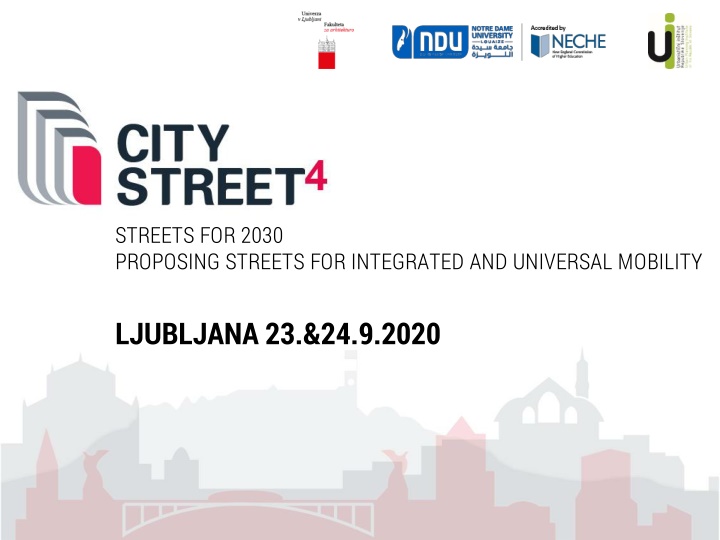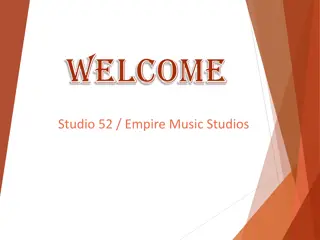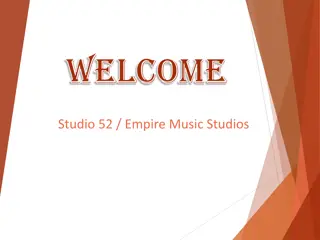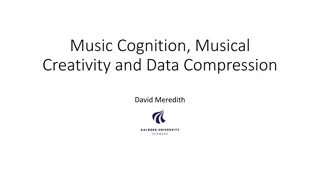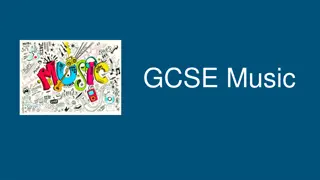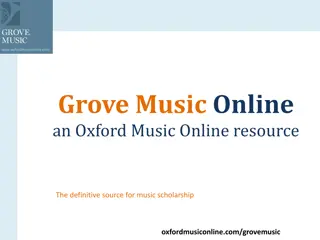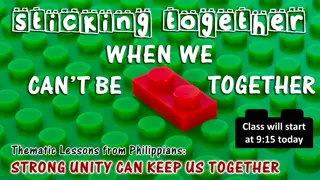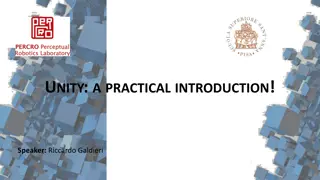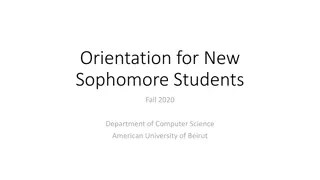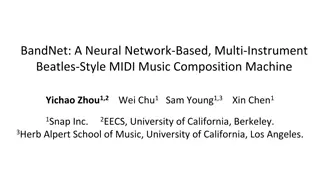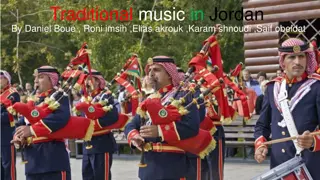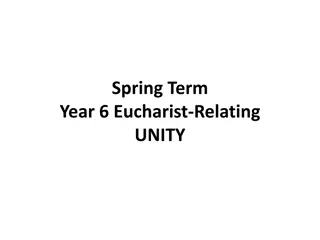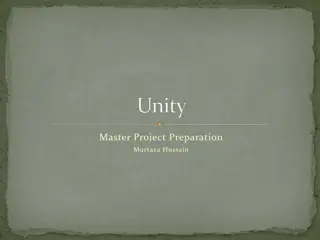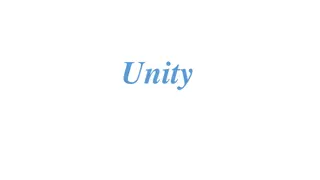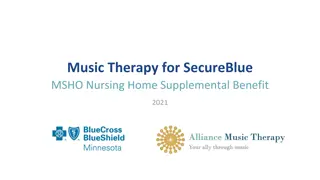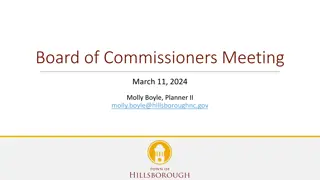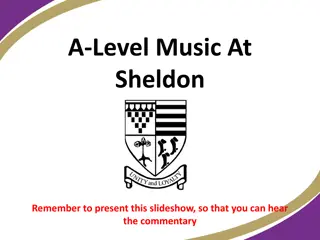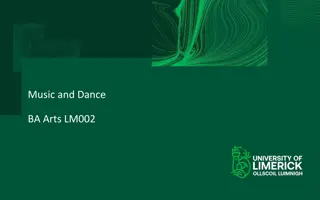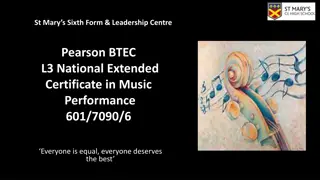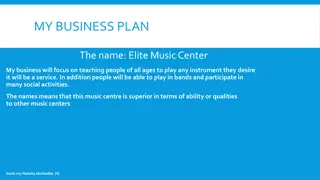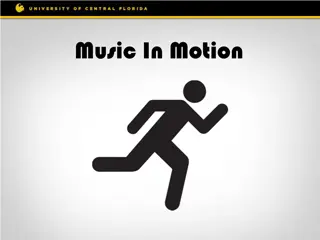Music and Unity on the Streets of Beirut
Connecting people through music in common spaces is explored through the vibrant street music culture in Downtown Beirut. Featuring the Rahbanis' folk music, Lebanese identity voices, and operettas like Operetta Sahret Hob, the streets become a stage for cultural expression and unity among Lebanese citizens.
Download Presentation

Please find below an Image/Link to download the presentation.
The content on the website is provided AS IS for your information and personal use only. It may not be sold, licensed, or shared on other websites without obtaining consent from the author.If you encounter any issues during the download, it is possible that the publisher has removed the file from their server.
You are allowed to download the files provided on this website for personal or commercial use, subject to the condition that they are used lawfully. All files are the property of their respective owners.
The content on the website is provided AS IS for your information and personal use only. It may not be sold, licensed, or shared on other websites without obtaining consent from the author.
E N D
Presentation Transcript
STREETS FOR 2030 PROPOSING STREETS FOR INTEGRATED AND UNIVERSAL MOBILITY LJUBLJANA 23.&24.9.2020
LOLA BEYROUTI INDEPENDENT MUSIC ON THE STREETS: Positive impressions
Connecting people through music in a common space Find common spaces on the streets where music bands and ensembles can perform, providing a sense of belonging to everyone on the street. Downtown Beirut was chosen as an example where music bands like the LeBAM (Lebanese Band Association for the promotion of Music) organize concerts and festivals. Images below retrieved:https://images.app.goo.gl/y8WPvHiV9FSP7TJQ7 The key words streets, folkloric music, and Rahbani summarize the hypothesis: Common Streets performance of the Rahbanis folkloric music with the Lebanese identity voice of Feyrouz connects people.
Excluding negative solutions in music and finding an Identity sound Religious music: different for each group Political music: differences between citizens The aim was to find a group Identity Sound common to all Lebanese citizens. This sound can be found in an elaborated folkloric music with an original musical language, that is an adaptation of specific Arabic music modes combined with the Octoechos of the Syriac modes (scales) on Lebanese rhetoric and semiotics, such as the Rahbanis folk music, songs and operettas.
Rahbanis Folk Music The Lebanese culture s past and the language traits are painted in the Rahbanis folk music, the Lebanese folkdance (dabke D-TD-T), and the voice of Fairuz. Their work was featured in Baalbeck Festivals before the civil war. The particularity of the Rahbanis is the mixing of rhythms and structures (all traditional rhythms) in one form of music that provides a Lebanese style. The use of the (ei)son is frequent, a sort of drone sound moving slowly along with the chant. Its use in the Byzantine Melchite liturgy is evident.
Operetta Sahret Hob https://www.youtube.com/watch?v=L01RivAmuhk&list=RDL01RivA muhk&index=1 Zajal, Mawwal (follows the rhythm of the language), Mouhawara, Qasida, and monologues (resembling to aria). Like the troubadours these actuality and love songs can be performed on the streets. Street music unquestionably influences the city and vice-versa (Bennett and Rogers, 2014). Knowing the rhythm of a street is to know who may be on it, or at a certain place along it during a given period; (Jacobs, A.B. (1993). Great Streets. Journal ACCESS Magazine, 1 (3). UC Berkeley, https://scholarship.org/uc/item/3t62h1fv )
The role of streets in music Streets have a social significance, and the interaction between citizens is better controlled with an adequate music as means of communication. Streets are important in the diffusion of the music as a collective message and social recognition. Using Rahbani s music with Fayrouz singing, brings the traditional folkloric sounds, mixing the musical language of the different religious groups composing the Lebanese community in one genre of music representing the souvenirs of an authentic Lebanese life.
Example of one song New shapes are also given to the songs, such as the Layali el chimal song that is based on A BA C DA + coda, and where C is instrumental. This song is not following exactly the traditional forms cited in the paper; therefore it can be considered a fantasy rather than ughnia or song, using vocal with an instrumental interlude. The ughniya can last up to one hour and has a long introduction as well as multiple sections with full maqam modulations. https://www.youtube.com/watch?v=Hd9Xx52VI6Y Rhythms (Ouasn) and modes (as Touma explains in the system tonal-modal) or (maqam in Arabic) are having each their ethos (character and feeling), similar to Ancient Greek music.
Analysis and Results Feyrouz s voice with its rich timber ranges between alto and mezzo soprano A2 and C4 (France) A3 and C5 (US) The Rahbanis liked to use the minor modes with semitone instead of the modes with tone to be able to add the harmony. The introduction A is free following the language, calling the sad nights, then as the sentence develops a descending melodic line leads to the rhythmic pattern of the song DT----TD-----T with a faster tempo. The maqam kurd add to the nostalgia triggered by the call. The understanding of this music happens with these melodic lines in an ascending and descending movement, in the melodic progression of the narration, in the stereotypes of the imagination, picturing these sad northern nights. The ethnicity and comprehension of the language helps understanding the music as well.
Conclusion Emphasizing the role of the music on the streets, and particularly in the downtown area of the capital Beirut inhabited by the diverse people. Many groups are performing in this space which needs acoustical setting. Although the walls of the buildings are creating a sort of balance between reflection and absorption, there is still a need for supportive audio equipment. Rahbanis music is original composed with Lebanese structures using mainly the minor Arabic modes. Its particularity is that it unifies the different groups by using common social issues on different musical languages. They feature many genres in one song and use sad modes on dance rhythm. They also use religious modes in popular music in an original manner, turning it to signature to Lebanese folkloric music.
